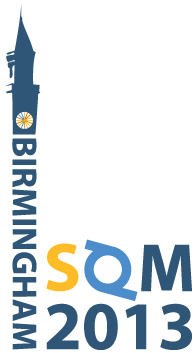Swatantra Kumar Tiwari
(Banaras Hindu University)
26/07/2013, 14:00
Talk
Recently, we proposed a thermodynamically consistent excluded-volume model for a hot, dense hadron gas (HG). We confront our model calculations on various properties of HG, multiplicity and ratios of various strange and non-strange particles in the entire range of temperature and baryon densities with the other models and experimental data and we find that our model describes the experimental...
Christian Schmidt
(University of Bielefeld)
26/07/2013, 14:40
Talk
Appropriate combinations of up to fourth order cumulants of net strangeness fluctuations and their correlations with net baryon number and electric charge fluctuations, obtained from ab-initio Lattice QCD calculations, have been used to probe the strangeness carrying degrees of freedom at high temperatures. For temperatures up to the chiral crossover separate contributions of strange mesons...
Prof.
Jean Cleymans
(University of Cape Town)
26/07/2013, 15:00
Talk
Changes in the transverse momentum distributions with beam energy
are studied using the Tsallis distribution as a parameterization.
The dependence of the Tsallis parameters q, T and the volume
are determined as a function of beam energy.
The Tsallis parameter q shows a weak but clear increase with beam energy
with the highest value being approximately 1.15.
The Tsallis temperature...
Dr
francesco scardina
(INFN Catania)
26/07/2013, 15:20
Talk
A current goal of relativistic heavy ion collisions experiments
is the search for a Color Glass Condensate as the limiting state of QCD matter at very high density.
In viscous hydrodynamics simulations, a standard Glauber initial condition leads to estimate $4\pi \eta/s \sim 1$, while
a Color Glass Condensate modeling leads to at least a factor of 2 larger $\eta/s$.
Within a kinetic theory...
